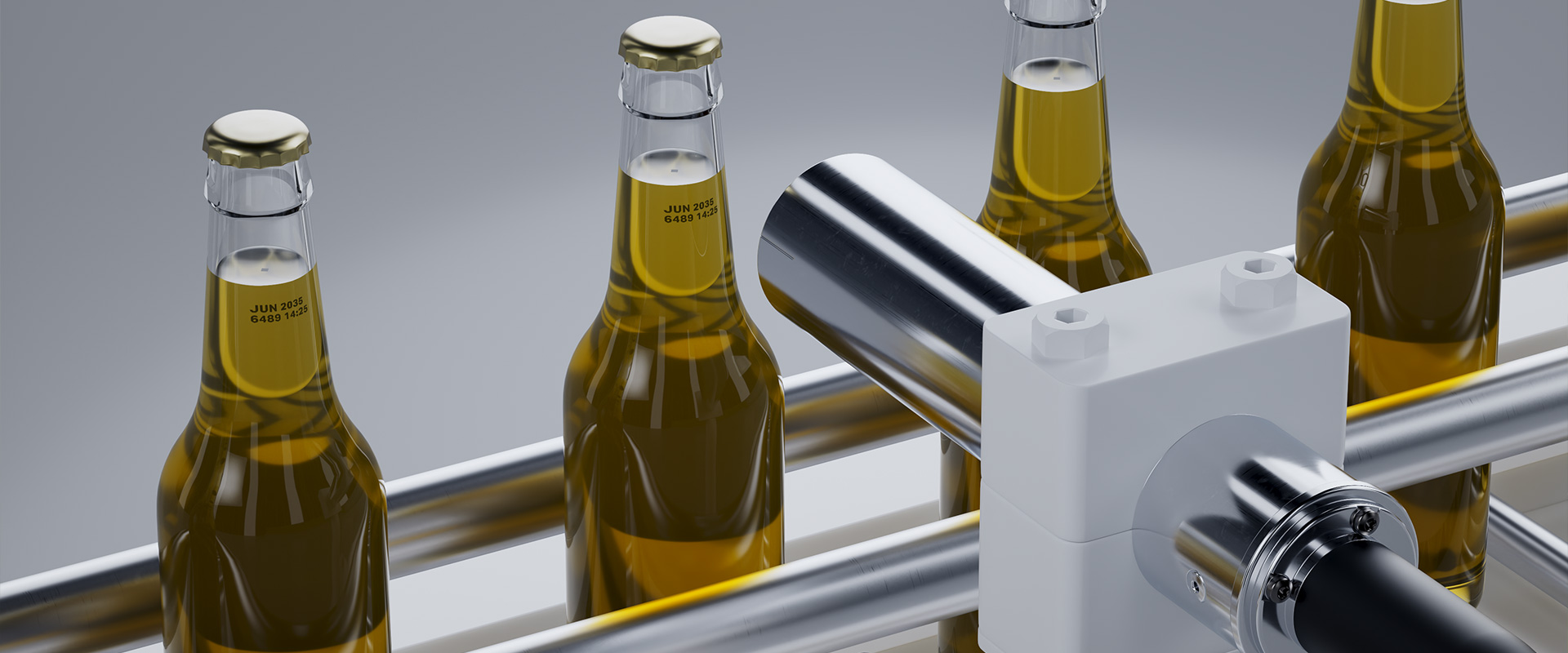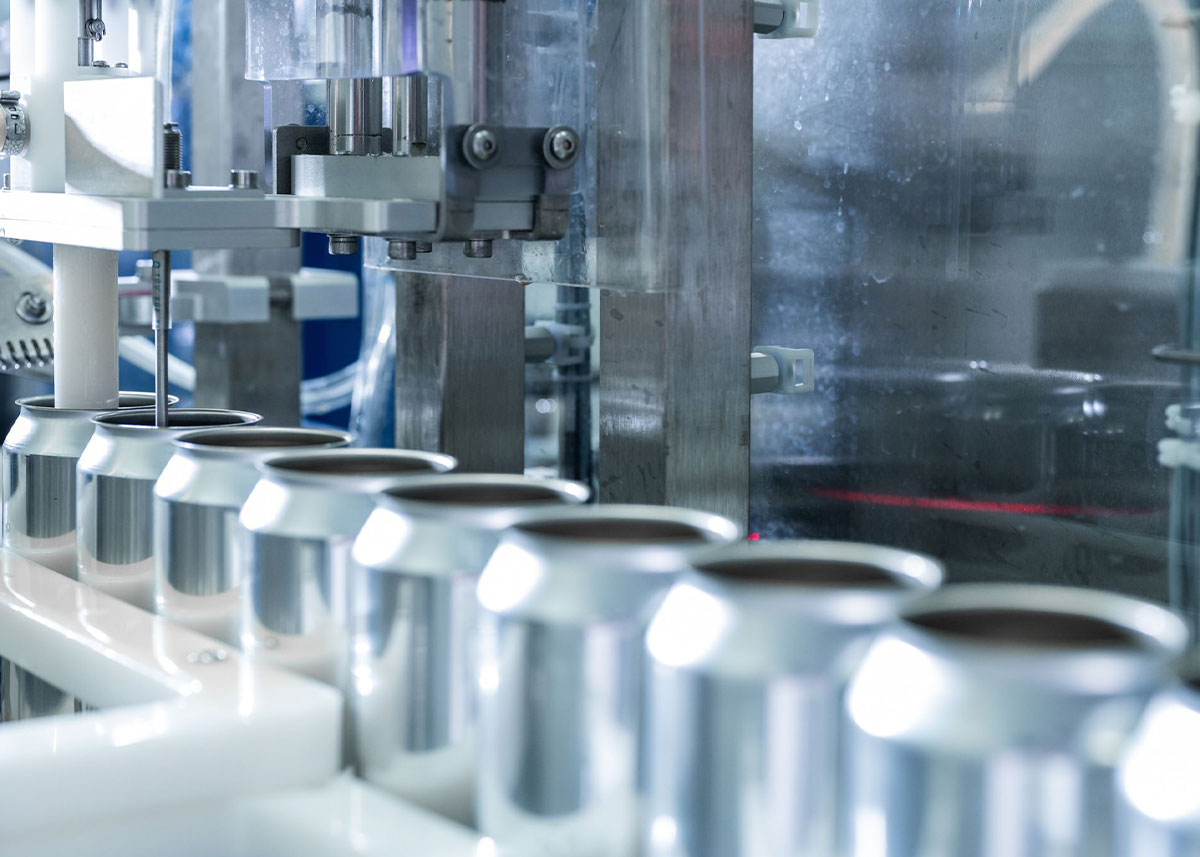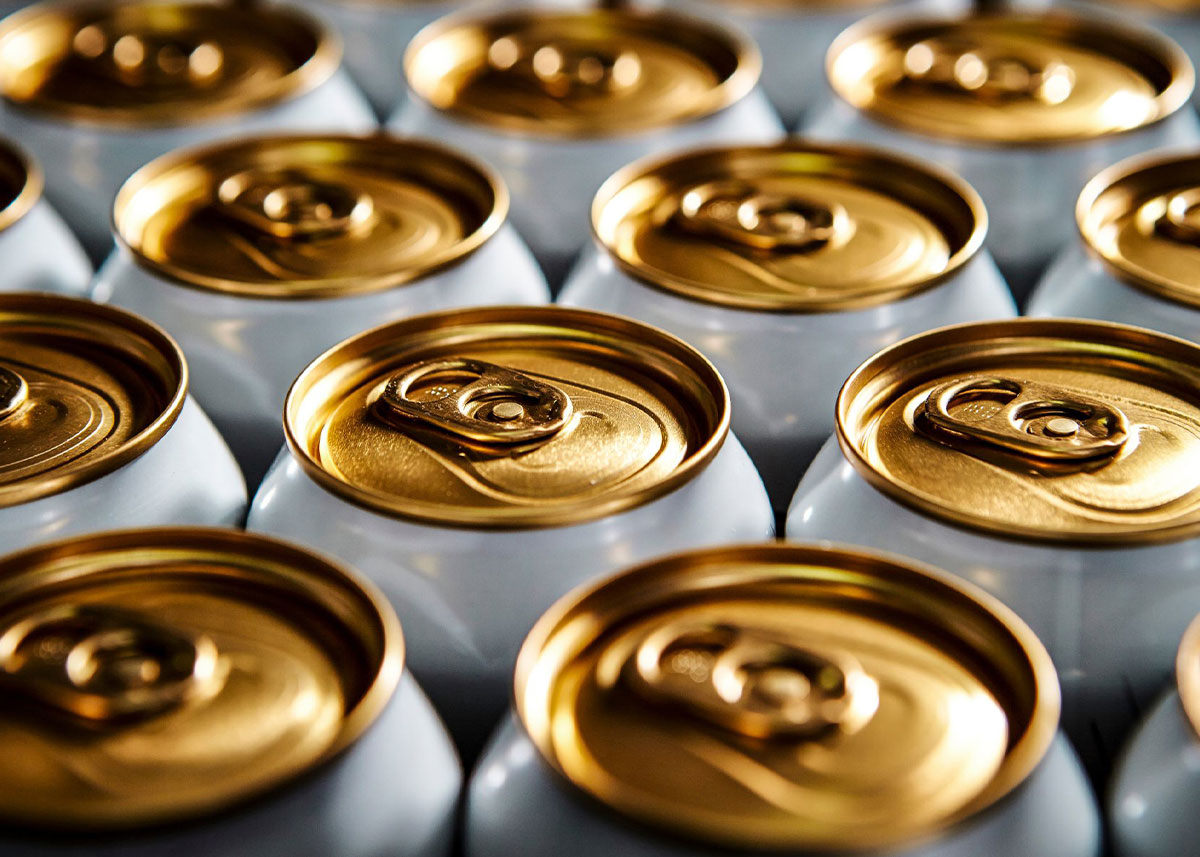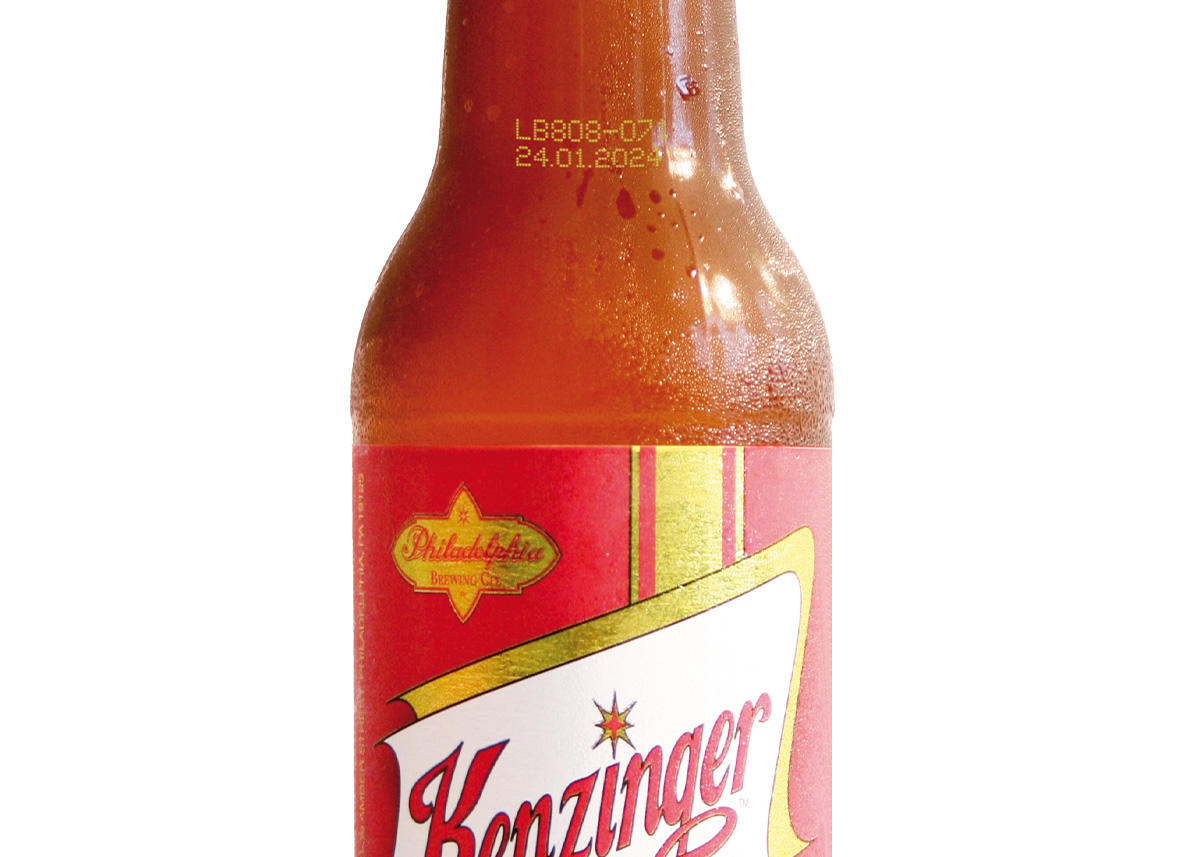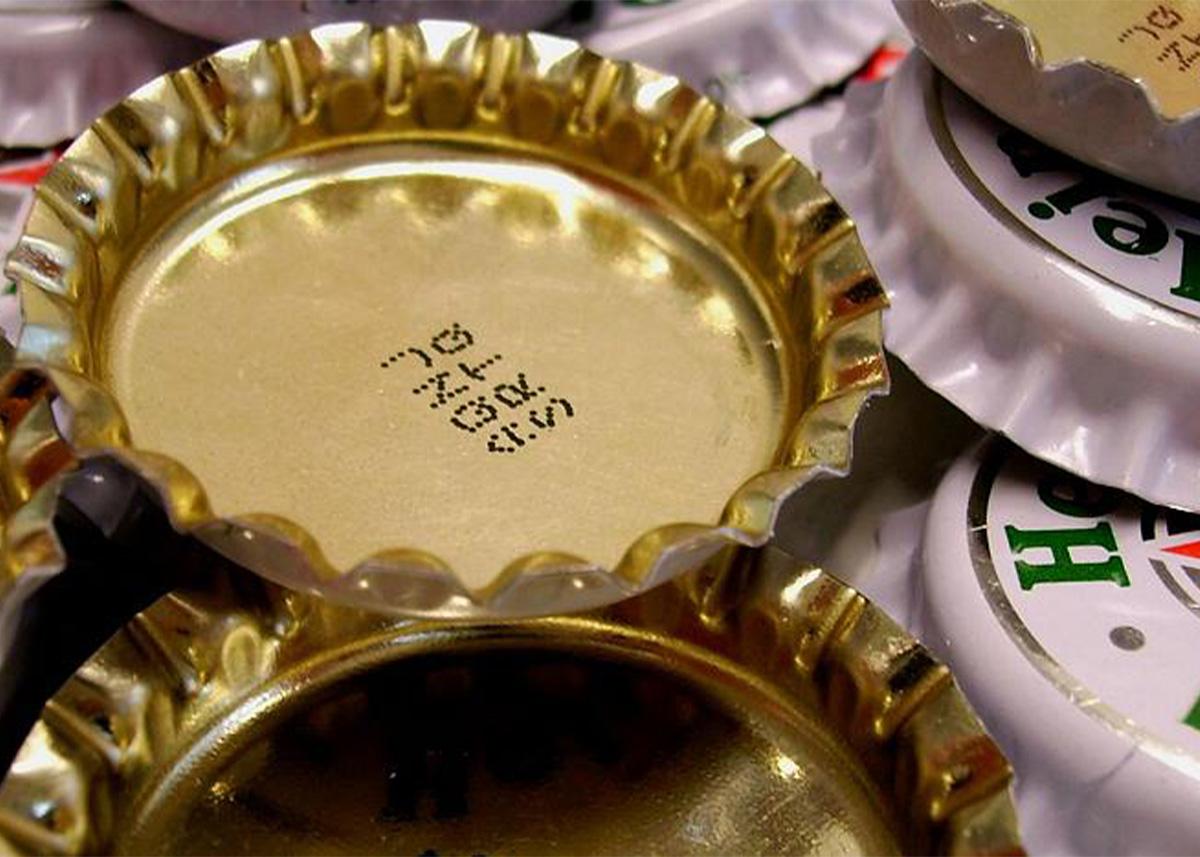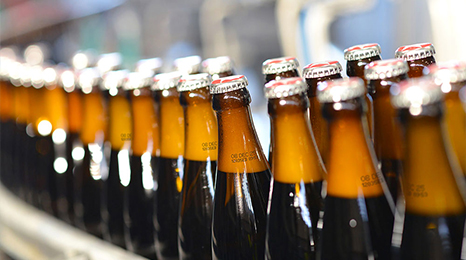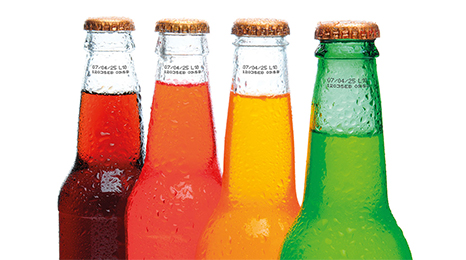The culture associated with beer is evolving all the time. The brewing industry is getting redefined by current trends such as the interest shown by consumers in a wide variety of types of beer, examples being the seasonal, fruity and spiced kinds, as well as by much greater emphasis on sustainability. At the same time, high product quality, efficient bottling including an ultimately reliable marking system all remain central to the success of breweries, especially now that the popularity of international and exotic beers continues to intensify the competitive situation.
The challenges for filling and marking
To assure that ultimate standard of quality, precise filling is essential. This involves avoiding the wastage of energy and resources, prevention of rejects and the assurance of sustainable production. No other industry in the food manufacturing sector works at such high production speeds and filled receptacles per minute as the beverage industry. The flip side of this is that if even just one component on the entire production line stops working, even just for a few minutes, this can cause several thousand receptacles to be produced defectively, rendering them unusable. Selecting efficient filling and marking technology therefore becomes a decisive success factor.
Labels need to be applied precisely and products must be packaged safely. Correct marking is of decisive importance for identification and marketing purposes. Traceability through the precise numbering of batches and the application of a sell-by date make it possible to react rapidly to any quality problems that may occur, or to recalls. In this humid production environment, the IP65 standard is indispensable for the marking systems used, ensuring fault-free function and durability.
Variable codings used in the brewing industry
Legally required coding is divided into static and variable coding. Static coding includes the specification of nutritional values and allergies as well as producer details and QR codes for marketing purposes. Usually, these are indelibly pre-printed on the bottle label, the can or the packaging.
Variable coding is dynamic and ever-changing. Examples of this include information on the production date or the sell-by date, with details of the precise filling time or batch number(s). In contrast to static coding, the application of variable coding must be integrated into the production process and needs to be as economical as possible.
The two most commonly used marking systems in the brewing industry are CIJ and laser marking.

Laser technology
With laser printing, the type of laser system used depends on the packaging unit – i.e. aluminum cans or glass bottles. For bottle filling, printing is usually performed by a laser system with carbon dioxide (CO2) as the laser medium. In this case, printing is performed by ablating the surface on the paper label. The printing process on a can-filling line is completely different. When printing aluminum cans, the printing (ablation of the surface) is performed by a solid-state laser with a wavelength of about 1060 nm, usually on the bottom of the can. Due to the high speeds involved, laser marking systems in the higher power spectrum are frequently used (between 70W -120 W) in can and bottle filling operations.
Laser printing systems usually have low rates of downtime, they are well suited for high-speed production operations and no regular maintenance is required. Furthermore, laser systems do not require consumables. Disadvantages of this technology include significant safety issues, requiring more peripherals during integration and operation. Especially when printing aluminum cans because the uncontrolled combustion process involved in laser printing, combined with the ablated particles of aluminum, can form a flammable and explosive mixture. The vapors created by the laser printing process may be toxic and must be extracted through a supplementary extraction unit and neutralized by an activated carbon filter. It should also be borne in mind that, viewed over the long-term and depending on the type of laser used, the beam source usually needs to be refilled or replaced after a certain time in operation, which is a very costly process indeed. A significant aspect is the high acquisition costs, which are 2 to 4 times higher for a laser marking system compared to a CIJ marking system.
Inkjet printers, also known as continuous inkjet (CIJ) printers
CIJ technology is by far the marking technology in most widespread use around the world. There are good reasons for this. It is relatively inexpensive, suitable for universal use. It is flexible and can deliver the high printing speeds required on filling systems. CIJ printers are suitable for almost all surfaces, shapes and materials. Coding is contactless. Integration is simple, operation is safe for people and the environment and no protective devices are necessary. The inks are extremely fast drying and are suitable for almost all production environments and applications. Furthermore, CIJ inks provide strong adhesion, while also allowing for easy removal during the recycling phase. The importance of recycling, especially in today's context, and the advantages it brings to businesses are unquestionable. A major disadvantage of conventional CIJ printers and one well known to the market is that they need regular cleaning, not infrequently even at every start-up. The production line has to be stopped whenever this happens. This occurs because the ink in the systems dries up when they are not in use, clogging the lines. Downtimes and an unsightly print image after start-up are the result. But LEIBINGER proves that there is another way:
New marking alternative, one that combines the advantages of both technologies
This year, LEIBINGER has launched a new marking alternative IQJET. This does away with the disadvantages of conventional CIJ technology while combining the advantages of both technologies, specifically maximum availability, minimum maintenance cost, favorable investment costs and ease of integration. In addition, this system embodies a clear focus on sustainability and the reduction of operating costs.
Maximum availability without failure-related downtime
Impeccable reliability and the prevention of malfunctions, especially in relation to the marking of products in the beverage industry, are immensely important qualities. The LEIBINGER IQJET was developed specifically to satisfy this aspiration. The two main differences to conventional CIJ printers are associated with the design of this product.
1. It is the automatic nozzle sealing technology in the IQJET, unique on this market, that delivers the required level of optimum reliability and seamless operation. This seals the ink circuit during breaks in printing, making it totally air-tight. This prevents the nozzle from clogging and the ink from drying out. The printer starts running immediately after being turned on again. This also avoids the cost of cleaning, preparation of the system and expensive downtime periods. The IQJET also continuously controls the temperature and viscosity of the ink, delivering consistently high print quality.
2. Another special feature of the IQJET is that it requires absolutely no maintenance during its first five years of operation. That makes it completely unique on the marking market and is a total innovation. This is achieved by the new and particularly robust product concept that is devised for maximum reduction in wear and durability.
Simple plug & print integration during operation
With the IQJET, LEIBINGER sets a new standard in relation to integration into production operations. The printer is equipped with a large number of interfaces including OPC UA and an integrated PLC (programmable logic controller) which means that it can be integrated quickly and easily in every filling plant.
Careful focus on low operating costs
This new printer also uses substantially less ink, solvent and power than conventional CIJ technologies. The scale of improvement can be illustrated effectively by taking a look at its use of solvent. During breaks in printing, the IQJET consumes no solvent at all, and it is the automatic nozzle sealing system which makes this possible. Solvents vaporized during the printing process are recovered and returned to the system. This results in lower emissions and a reduction of up to half in solvent consumption when compared to the systems of its competitors. The most noteworthy IQJET innovation in terms of energy consumption is the intelligent pump management system. With this system, the pumps no longer need to be operated continuously so they consume less energy and they also last longer. The IQJET is extremely energy efficient and on average makes do with a mere 36 watts.
Calculate your savings with IQJET
Ink expertise as an important aspect of decisions about marking
The CIJ inks used in the brewing industry possess a range of properties, depending on their type of application. Excellent adhesion and resistance to condensation and humidity must be assured in all applications, regardless of whether the label is being printed directly onto glass, PET or aluminum. Even the direct coding of reusable packaging for glass products or reusable aluminum kegs which must be resistant to humidity but which it must be possible to wash off with lye, is applied with an appropriate special grade of ink. The LEIBINGER portfolio encompasses a broad range of inks to suit almost every material and application. This is also true of particularly challenging environmental conditions, such as the temperature fluctuations and high humidity levels on beverage filling lines. Application experts from LEIBINGER are there to advise customers on the most appropriate ink to use on their specific systems.

Summary
Despite changing trends, safe and efficient marking remains a central feature of the brewing industry. The choice of the right technology plays a decisive role when it comes to tackling the challenges presented by filling systems. Efficient marking systems like the LEIBINGER IQJET provide maximum support in the achievement of sustainability objectives, productivity and the reduction of total operating costs.
Innovative coding technology
for the brewing industry
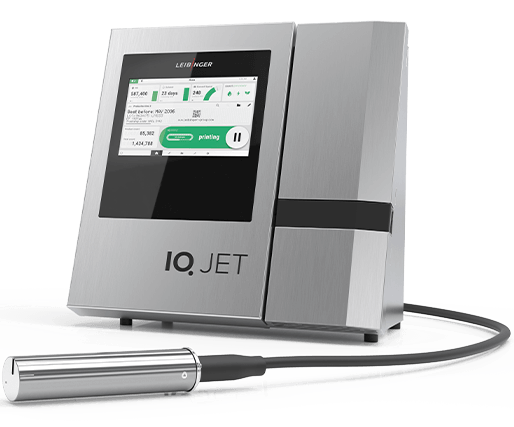
IQJET - the world's first intelligent coding system. Print variable data on bottles or cans. Experience groundbreaking efficiency, effortless usability, cost-effective operation and a maintenance-free duration of five years.

